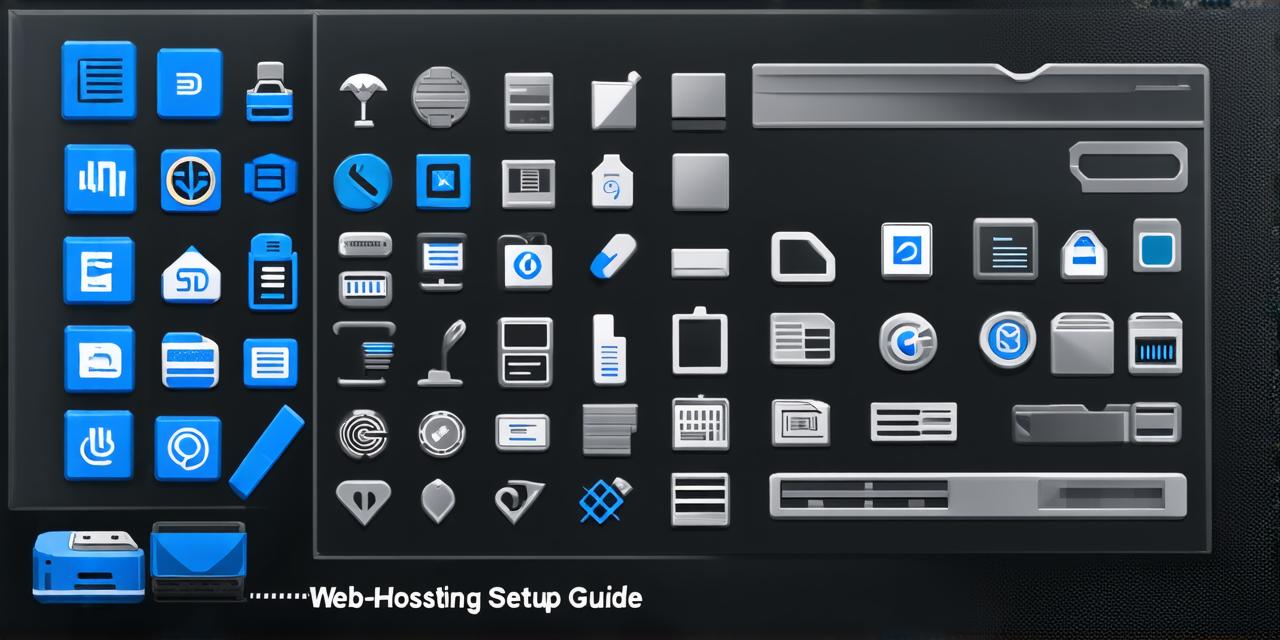Table of Contents:
- Introduction to Web Hosting Services
2. Types of Web Hosting Services
3. How to Choose the Right Web Hosting Service for Your Website
4. Setting Up Web Hosting Services: A Step-by-Step Guide

- Common Issues and Solutions When Setting up Web Hosting Services
- Conclusion
- Introduction to Web Hosting Services
Web hosting services are the backbone of your website. They provide the infrastructure needed to store and serve your website’s files, databases, and emails. Without web hosting services, your website will be inaccessible to your audience.
When choosing a web hosting service, there are several factors to consider, such as uptime, speed, security, support, and cost. In this guide, we will discuss these factors in detail and walk you through the process of setting up web hosting services for your website.2. Types of Web Hosting Services
There are three main types of web hosting services: shared hosting, dedicated hosting, and cloud hosting.
Shared hosting is the most popular type of web hosting service. It provides a shared server environment where multiple websites can be hosted on the same server. This type of web hosting service is ideal for small to medium-sized businesses with basic website needs.
Dedicated hosting is a type of web hosting service that provides a dedicated server environment for a single website. This type of web hosting service is ideal for large businesses with complex website needs and high traffic volumes.
Cloud hosting is a type of web hosting service that uses cloud technology to store and serve your website’s files, databases, and emails. This type of web hosting service provides scalability, reliability, and security.3. How to Choose the Right Web Hosting Service for Your Website
When choosing a web hosting service, there are several factors to consider:
Uptime: Uptime refers to the amount of time your website is available online. A web hosting service with high uptime is essential to ensure that your website is always accessible to your audience.
Speed: Speed refers to the loading speed of your website. A web hosting service with fast speed is essential to ensure that your website loads quickly and provides a good user experience.
Security: Security refers to the measures in place to protect your website from cyber threats such as malware, hacking, and phishing attacks. A web hosting service with robust security features is essential to protect your website and its data.
Support: Support refers to the level of support provided by the web hosting service provider. A web hosting service with 24/7 support is ideal to ensure that you can get help when needed.
Cost: Cost refers to the cost of the web hosting service. There are various types of web hosting services available, and their costs vary depending on their features and benefits.4. Setting Up Web Hosting Services: A Step-by-Step Guide
Setting up web hosting services can be a complex process. However, with this step-by-step guide, you can set up your web hosting service easily.
Step 1: Choose a Web Hosting Service Provider
The first step is to choose a web hosting service provider that meets your website’s needs. There are various web hosting service providers available, such as Bluehost, SiteGround, and A2 Hosting. Compare the features and benefits of each provider and choose the one that suits your website’s needs.
Step 2: Choose a Web Hosting Plan
The second step is to choose a web hosting plan that meets your website’s needs. There are various types of web hosting plans available, such as shared hosting, dedicated hosting, and cloud hosting. Compare the features and benefits of each plan and choose the one that suits your website’s needs.
Step 3: Install a Content Management System (CMS)
The third step is to install a CMS on your web hosting service. A CMS is a software application that allows you to manage the content of your website easily. Some popular CMS platforms include WordPress, Joomla, and Drupal. Choose a CMS platform that meets your website’s needs and install it on your web hosting service.
Step 4: Upload Your Website Files
The fourth step is to upload your website files to your web hosting service. Your website files include HTML, CSS, JavaScript, images, and other media files. Use an FTP client or a file manager provided by your web hosting service provider to upload your website files.
Step 5: Configure Your Domain Name
The fifth step is to configure your domain name.
Common Issues and Solutions When Setting up Web Hosting Services - Conclusion



